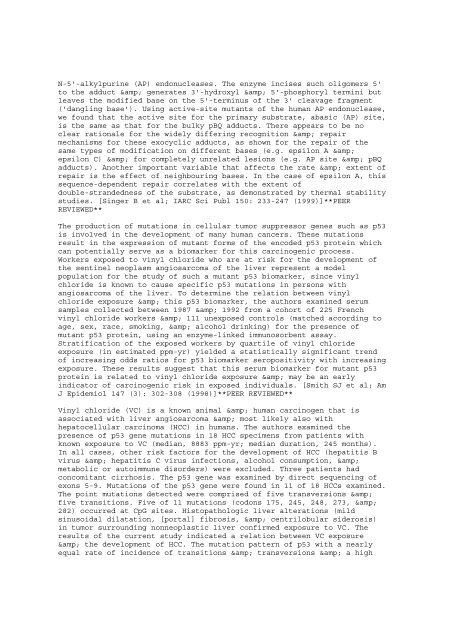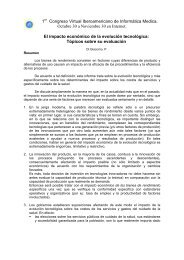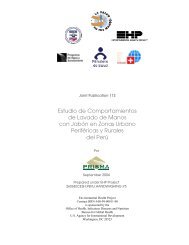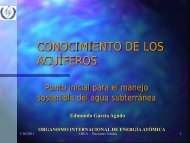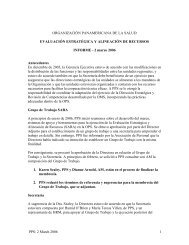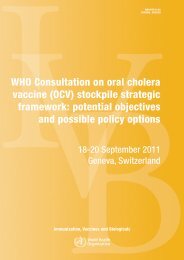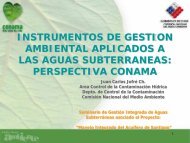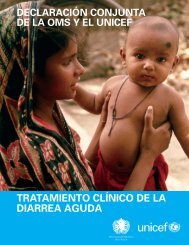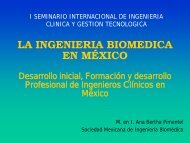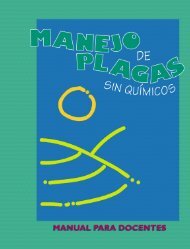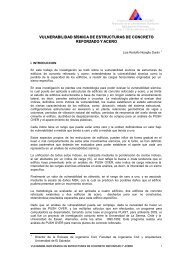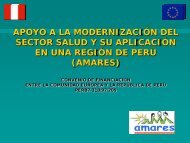a database of the National Library of M
a database of the National Library of M
a database of the National Library of M
You also want an ePaper? Increase the reach of your titles
YUMPU automatically turns print PDFs into web optimized ePapers that Google loves.
N-5'-alkylpurine (AP) endonucleases. The enzyme incises such oligomers 5'to <strong>the</strong> adduct & generates 3'-hydroxyl & 5'-phosphoryl termini butleaves <strong>the</strong> modified base on <strong>the</strong> 5'-terminus <strong>of</strong> <strong>the</strong> 3' cleavage fragment('dangling base'). Using active-site mutants <strong>of</strong> <strong>the</strong> human AP endonuclease,we found that <strong>the</strong> active site for <strong>the</strong> primary substrate, abasic (AP) site,is <strong>the</strong> same as that for <strong>the</strong> bulky pBQ adducts. There appears to be noclear rationale for <strong>the</strong> widely differing recognition & repairmechanisms for <strong>the</strong>se exocyclic adducts, as shown for <strong>the</strong> repair <strong>of</strong> <strong>the</strong>same types <strong>of</strong> modification on different bases (e.g. epsilon A &epsilon C) & for completely unrelated lesions (e.g. AP site & pBQadducts). Ano<strong>the</strong>r important variable that affects <strong>the</strong> rate & extent <strong>of</strong>repair is <strong>the</strong> effect <strong>of</strong> neighbouring bases. In <strong>the</strong> case <strong>of</strong> epsilon A, thissequence-dependent repair correlates with <strong>the</strong> extent <strong>of</strong>double-strandedness <strong>of</strong> <strong>the</strong> substrate, as demonstrated by <strong>the</strong>rmal stabilitystudies. [Singer B et al; IARC Sci Publ 150: 233-247 (1999)]**PEERREVIEWED**The production <strong>of</strong> mutations in cellular tumor suppressor genes such as p53is involved in <strong>the</strong> development <strong>of</strong> many human cancers. These mutationsresult in <strong>the</strong> expression <strong>of</strong> mutant forms <strong>of</strong> <strong>the</strong> encoded p53 protein whichcan potentially serve as a biomarker for this carcinogenic process.Workers exposed to vinyl chloride who are at risk for <strong>the</strong> development <strong>of</strong><strong>the</strong> sentinel neoplasm angiosarcoma <strong>of</strong> <strong>the</strong> liver represent a modelpopulation for <strong>the</strong> study <strong>of</strong> such a mutant p53 biomarker, since vinylchloride is known to cause specific p53 mutations in persons withangiosarcoma <strong>of</strong> <strong>the</strong> liver. To determine <strong>the</strong> relation between vinylchloride exposure & this p53 biomarker, <strong>the</strong> authors examined serumsamples collected between 1987 & 1992 from a cohort <strong>of</strong> 225 Frenchvinyl chloride workers & 111 unexposed controls (matched according toage, sex, race, smoking, & alcohol drinking) for <strong>the</strong> presence <strong>of</strong>mutant p53 protein, using an enzyme-linked immunosorbent assay.Stratification <strong>of</strong> <strong>the</strong> exposed workers by quartile <strong>of</strong> vinyl chlorideexposure (in estimated ppm-yr) yielded a statistically significant trend<strong>of</strong> increasing odds ratios for p53 biomarker seropositivity with increasingexposure. These results suggest that this serum biomarker for mutant p53protein is related to vinyl chloride exposure & may be an earlyindicator <strong>of</strong> carcinogenic risk in exposed individuals. [Smith SJ et al; AmJ Epidemiol 147 (3): 302-308 (1998)]**PEER REVIEWED**Vinyl chloride (VC) is a known animal & human carcinogen that isassociated with liver angiosarcoma & most likely also withhepatocellular carcinoma (HCC) in humans. The authors examined <strong>the</strong>presence <strong>of</strong> p53 gene mutations in 18 HCC specimens from patients withknown exposure to VC (median, 8883 ppm-yr; median duration, 245 months).In all cases, o<strong>the</strong>r risk factors for <strong>the</strong> development <strong>of</strong> HCC (hepatitis Bvirus & hepatitis C virus infections, alcohol consumption, &metabolic or autoimmune disorders) were excluded. Three patients hadconcomitant cirrhosis. The p53 gene was examined by direct sequencing <strong>of</strong>exons 5-9. Mutations <strong>of</strong> <strong>the</strong> p53 gene were found in 11 <strong>of</strong> 18 HCCs examined.The point mutations detected were comprised <strong>of</strong> five transversions &five transitions. Five <strong>of</strong> 11 mutations (codons 175, 245, 248, 273, &282) occurred at CpG sites. Histopathologic liver alterations (mildsinusoidal dilatation, [portal] fibrosis, & centrilobular siderosis)in tumor surrounding nonneoplastic liver confirmed exposure to VC. Theresults <strong>of</strong> <strong>the</strong> current study indicated a relation between VC exposure& <strong>the</strong> development <strong>of</strong> HCC. The mutation pattern <strong>of</strong> p53 with a nearlyequal rate <strong>of</strong> incidence <strong>of</strong> transitions & transversions & a high


